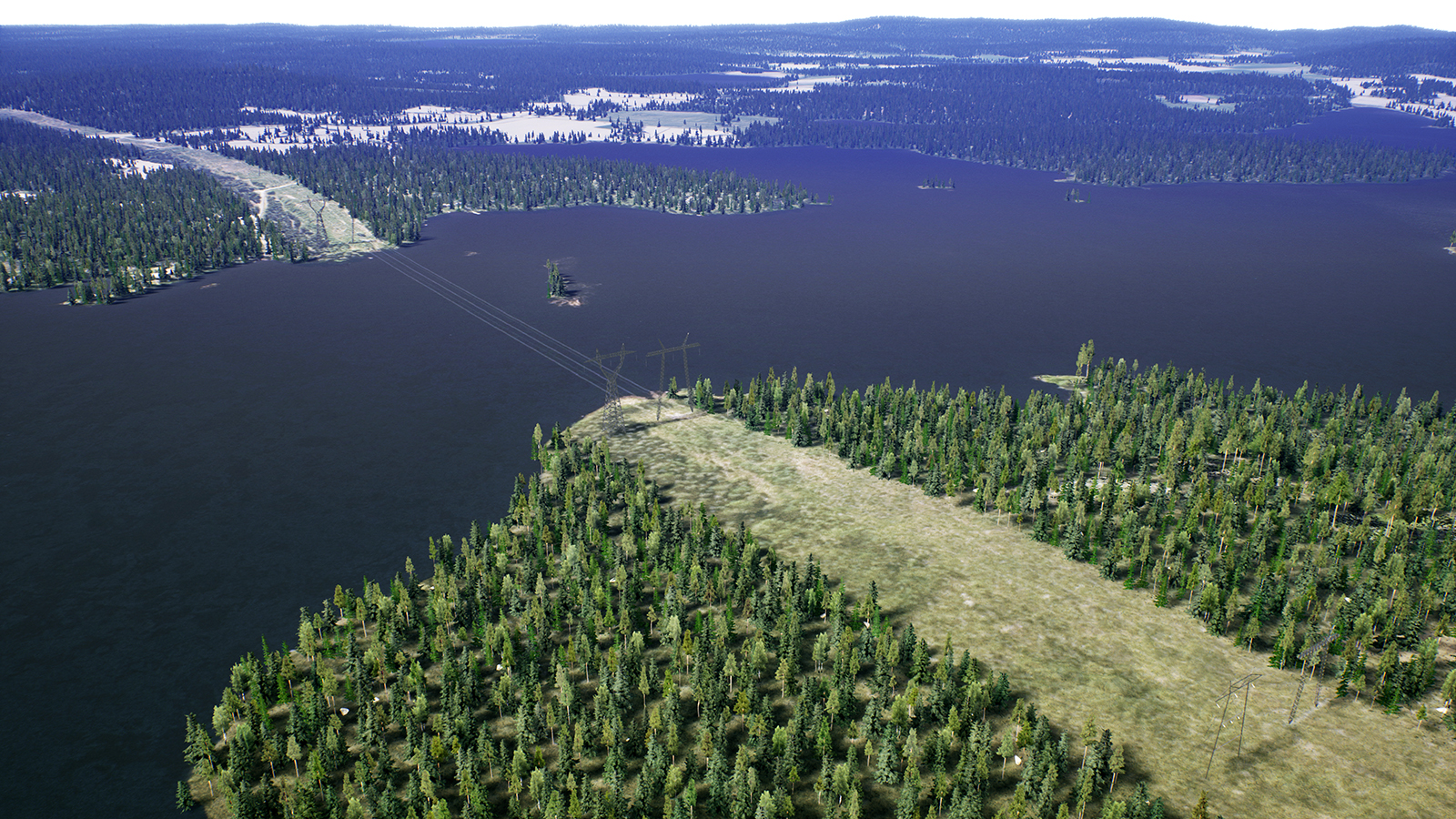The actual future appearance of various structures can be presented on 3D models, which provide a three-dimensional illustration of a selected location. Fingrid is currently piloting this technology in the environmental impact assessments for its Lake Line from Oulu to Lappeenranta project. The 3D virtual model provides a more visual image of the future transmission line than simply a line on a map.
“The 3D virtual model places the transmission line’s towers into a virtual environment, which is brought to life using artificial elements. Combinations of these give rise to a game-like virtual world, where transmission lines and towers of realistic heights can be viewed from locations such as the back yards of nearby houses,” says Pasi Turunen, Expert at Fingrid.
As regards tower locations, the 3D virtual model does not entirely correspond to the final outcome, as modelling takes place before general planning begins. The final placement of the towers depends on the soil and a number of technical issues that are not all known at the modelling stage. However, the aim of modelling is to create as realistic a view of the future transmission line as possible.
Based on solutions from the world of gaming
Modelling takes several hours of work, but it does not require anyone to climb up a mast. The 3D virtual models produced on computers are based on map data that is publicly available from the National Land Survey of Finland. Unreal Engine 4, a game engine, is used to build the virtual model and present the material placed into the virtual world.
The three-dimensional view brings new landscape aspects to transmission line projects. It is intended for use during the project’s planning and environmental impact assessment phases, as well as the related public consultations. 3D material will also be made available on Fingrid’s website, which may present key locations along the transmission line in the form of short videos.
“The transmission line will travel approximately 300 kilometres, giving rise to a lot of three-dimensional data that is challenging to distribute in its original format. However, the use of 3D virtual models in our work is still in its infancy, so these things will be given greater consideration as we build up more experience. The 3D material that is made more widely available may include important landscapes and densely populated areas,” says Turunen.







